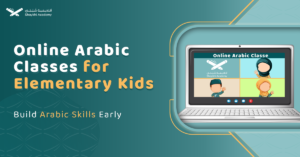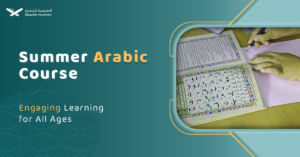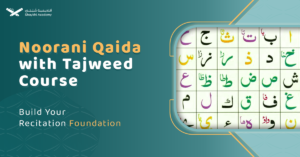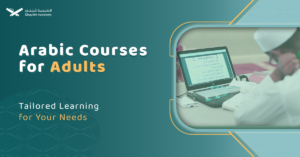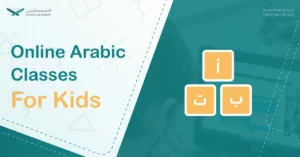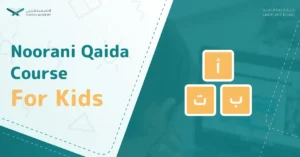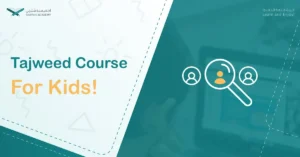Mastering Arabic verbs is like unlocking the heart of the Arabic language. These versatile building blocks of communication bring actions, thoughts, and emotions to life in any conversation. Whether you’re exploring the beauty of classical texts or engaging in everyday dialogue, understanding Arabic verbs opens the door to a deeper connection with the language.
This guide offers a curated list of commonly used verbs, thoughtfully organized into categories to make learning intuitive and engaging. Alongside the list, you’ll discover practical strategies to memorize, conjugate, and use these verbs effectively. From understanding root patterns to crafting meaningful sentences, this is your gateway to enriching your Arabic vocabulary and fluency. Let’s embark on this exciting journey together!
What Is a List of Arabic Verbs?
A list of Arabic verbs seeks to introduce a number of verbs to you in an attempt to help you familiarize yourself with the language and learn more about Arabic verbs; an important aspect of the Arabic language. In Arabic, a verb (فعل) is a word that indicates an action, occurrence, or state of being, similar to verbs in other languages.
Arabic verbs are characterized by their root letters, which typically consist of three or four consonants, and they follow specific patterns that determine their meaning and grammatical role. The intricacies of such a complicated system are explained in detail in many courses that target teaching the Arabic language such as the General Arabic course at Shaykhi Academy.
A List of Arabic Verbs:
A list of Arabic verbs such as the one below will introduce many commonly used Arabic verbs to you and help you enrich your Arabic vocabulary greatly:
| Arabic Verb | Transliteration | Meaning |
| A- Verbs of General Actions | ||
| 1. كتب | kataba | to write |
| 2. قرأ | qara’a | to read |
| 3. قال | qala | to say |
| 4. فعل | fa‘ala | to do |
| 5. أكل | akala | to eat |
| 6. شرب | shariba | to drink |
| 7. جلس | jalasa | to sit |
| 8. قام | qama | to stand/get up |
| B- Verbs of Movement | ||
| 9. ذهب | dhahaba | to go |
| 10. جاء | ja’a | to come |
| 11. مشى | masha | to walk |
| 12. ركض | rakada | to run |
| 13. عاد | ‘ada | to return |
| 14. سافر | saafara | to travel |
| 15. دخل | dakhala | to enter |
| 16. خرج | kharaja | to exit/leave |
| C- Verbs of Communication | ||
| 17. تحدث | tahaddatha | to speak |
| 18. سأل | sa’ala | to ask |
| 19. أجاب | ajaba | to answer |
| 20. نادى | naada | to call (someone) |
| 21. سكت | sakata | to be silent |
| D- Verbs of Thinking and Feeling | ||
| 22. ظنّ | zanna | to think/assume |
| 23. عرف | ‘arafa | to know |
| 24. تذكر | tadhakkara | to remember |
| 25. نسي | nasiya | to forget |
| 26. أحبّ | ahabba | to love |
| 27. كره | kariha | to hate |
| 28. شعر | sha‘ara | to feel |
| E- Verbs of Daily Activities | ||
| 29. استيقظ | istayqaẓa | to wake up |
| 30. نام | naama | to sleep |
| 31. لبس | labisa | to wear |
| 32. غسل | ghasala | to wash |
| 33. عمل | ʿamila | to work |
| 34. تعلم | ta‘allama | to learn |
| 35. طبخ | ṭabkha | to cook |
| 36. اشترى | ishtara | to buy |
| F- Verbs of Physical Actions | ||
| 37. حمل | ḥamala | to carry |
| 38. أخذ | akhadha | to take |
| 39. أعطى | a‘ṭa | to give |
| 40. ضرب | ḍaraba | to hit |
| 41. رمى | rama | to throw |
| G- Verbs of Perception | ||
| 42. رأى | ra’a | to see |
| 43. سمع | sami‘a | to hear |
| 44. شمّ | shamma | to smell |
| 45. لمس | lamasa | to touch |
| H- Religious and Social Actions | ||
| 46. صلى | ṣalla | to pray |
| 47. صام | ṣama | to fast |
| 48. زار | zaara | to visit |
| 49. دعا | da‘a | to call upon/supplicate |
| 50. صدق | ṣadaqa | to be truthful |
How to Study a List of Arabic Verbs?
Studying a list of Arabic verbs effectively requires a combination of active and passive learning strategies to enhance both recognition and application. Here’s a step-by-step guide:
1. Categorize the Verbs
Break the list into smaller, manageable categories (e.g., actions, movement, communication). This helps your brain associate similar verbs together, making them easier to recall.
2. Focus on Root Patterns
Most Arabic verbs derive from a three-letter root system. Familiarize yourself with common roots and their meanings, as they provide a foundation for understanding many other verbs.
For example:
كتب (kataba – to write) → مكتبة (maktaba – library).
خرج (kharaja – to exit) → مخرج (makhraj – exit).
3. Learn by Context
Memorize verbs with simple sentences. Instead of memorizing “كتب” (to write) in isolation, use it in a sentence:
أنا أكتب رسالة (Ana aktubu risala – I write a letter).
This practice ensures you learn the verb’s conjugation and usage in context and it is mostly practised in advanced Arabic courses such as Shaykhi Academy’s Classical Arabic course that teach the students how to build a sentence and the role of the verb in the Arabic sentence.
4. Practice Conjugation
Arabic verbs change based on tense (past, present, imperative) and subject (gender, number). Practice conjugating each verb in:
Past tense: كتب (kataba – he wrote).
Present tense: يكتب (yaktubu – he writes).
Imperative: اكتب (uktub – write!).
5. Use Flashcards
Create flashcards for active recall. On one side, write the Arabic verb and its transliteration. On the other, write the meaning in English and an example sentence.
6. Engage with Audio and Video
Listening to native speakers use these verbs in conversation or media improves your pronunciation and comprehension. Use resources like YouTube, podcasts, or language apps to hear verbs in action.
7. Play Language Games
Games like matching verbs to their meanings or filling in blanks with appropriate verbs can reinforce your learning in a fun way.
8. Set Daily Goals
Commit to learning a set number of verbs daily (e.g., 5-10 verbs). Regular review of previous verbs ensures long-term retention.
9. Practice Writing
Write short paragraphs or diary entries using as many verbs from your list as possible. For instance:
ذهبت إلى المكتبة وقرأت كتابًا (I went to the library and read a book).
10. Immerse Yourself in Real-Life Usage
Try using Arabic verbs during conversations, whether with a teacher, language partner, or online communities. Immediate feedback will help refine your usage and boost confidence.
Unlock the Beauty of Arabic with Expert Guidance at Shaykhi Academy
Ready to dive into the richness of the Arabic language? Join our Learn Arabic Online Course at Shaykhi Academy and experience a transformative journey with highly qualified teachers. Whether you’re a beginner or looking to refine your skills, our personalized classes are tailored to your goals.
With flexible schedules, interactive lessons, and a proven curriculum, mastering Arabic has never been this accessible or enjoyable. Don’t wait to open doors to new opportunities in culture, communication, and understanding.
Enroll today and take the first step toward fluency in Arabic!
Why Shaykhi Academy?
- Expert Native Tutors: Learn from highly qualified native Arabic speakers.
- Flexible Scheduling: Tailor your classes to fit your busy life.
- Affordable Learning: Access top-quality education at a price that suits you.
- Global Access: Study from anywhere in the world.
Explore Our Arabic Courses:
- Noorani Qaida: Build a strong foundation in Quranic Arabic.
- Comprehensive Arabic Courses: Master the Arabic language, from beginner to advanced levels.
- Fusha Arabic Classes: Delve into Modern Standard Arabic, the key to understanding literature, media, and formal communication across the Arab world.
- Quranic Arabic Course: Enhance your connection with the Quran by learning the language in which it was revealed.
Start Your Arabic Journey Today! Whether you’re just starting or looking to deepen your knowledge, Shaykhi Academy is here to support your journey. Book your free trial now and begin your path to Arabic mastery!

The Conclusion:
Learning Arabic verbs is a crucial step toward mastering the Arabic language. By familiarizing yourself with a comprehensive list of verbs and adopting effective study strategies, you can significantly expand your vocabulary and improve your understanding of the language’s structure.
This guide has provided a categorized list of verbs alongside practical learning techniques, such as focusing on root patterns, practicing conjugations, and engaging with contextual usage. Whether through flashcards, writing exercises, or real-life interactions, consistent practice is key to making steady progress.
With dedication and the right approach, Arabic verbs will become an integral and accessible part of your language-learning journey.









